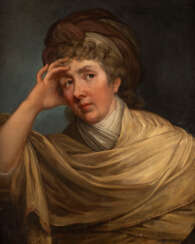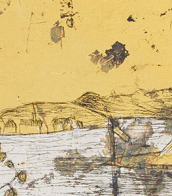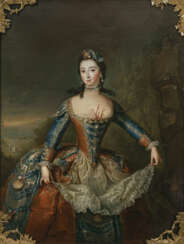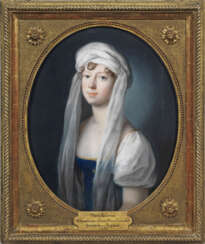bildnis einer fürstin

Johann Heinrich Tischbein the Elder, known as the Kasseler Tischbein, was one of the most respected European painters in the 18th century and an important member of the Tischbein family of German painters, which spanned three generations.
His work consisted primarily of portraits of the nobility, mythological scenes, and historical paintings. For his mythology paintings his models were mostly members of the upper nobility.


Georges Desmarées was a Swedish-born German portrait painter.




Joseph Vivien was a French painter from Lyon.
He left Lyon for Paris at the age of twenty and found employment in the large atelier of Charles Le Brun, the equivalent of an academy. He made his reputation with his portraits in pastels, to which he gave a sparkle and immediacy previously unreached in that medium.



Joseph Vivien was a French painter from Lyon.
He left Lyon for Paris at the age of twenty and found employment in the large atelier of Charles Le Brun, the equivalent of an academy. He made his reputation with his portraits in pastels, to which he gave a sparkle and immediacy previously unreached in that medium.


Barbara Rosina de Gasc (Lisiewska) was a German portrait painter.


Barbara Rosina de Gasc (Lisiewska) was a German portrait painter.


Johann Georg Ziesenis was a German portrait painter. He came from a family of artisans and artists of the 17th and 18th centuries whose works are attributed to the Hanoverian Rococo.


Georges Desmarées was a Swedish-born German portrait painter.

Louis de Silvestre was a French portrait painter.


Joseph Karl Stieler was a German painter. From 1820 until 1855 he worked as royal court painter of the Bavarian kings. He is known for his Neoclassical portraits, especially for the Gallery of Beauties at Nymphenburg Palace in Munich, as well as his emblematic portrait of Ludwig van Beethoven, which has become one of his most famous works.









































































